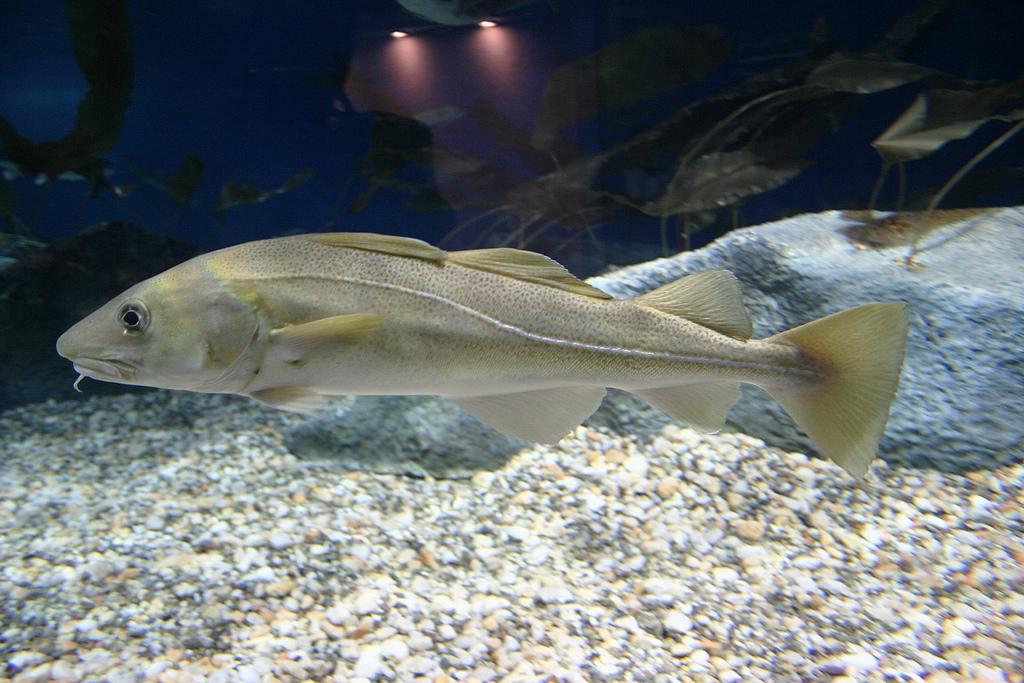For fish, the good and bad of warming ocean waters
Atlantic cod at an aquarium. According to a new study, the species is one that could benefit from warming ocean temperatures along the Atlantic coast.
As ocean temperatures rise, what will happen to the fish we eat?
According to a recent study published in “Progress in Oceanography,” some fish species will thrive in warmer waters — and others, not so much.
Using a detailed climate model and historical observation data, researchers at NOAA and The Nature Conservancy modeled the shifting thermal habitats of over 50 species along the Atlantic coast, from North Carolina to the Gulf of Maine.
“So it’s basically a picture of the water temperature and the depths that individual species are most commonly associated with,” says lead author Kristin Kleisner, now a senior scientist at the Environmental Defense Fund’s Fisheries Solutions Center.
Ocean temperatures in the region are expected to increase 6.6 to 9 degrees Fahrenheit (3.7 to 5.0 degrees Celsius) by the end of the century, according to NOAA. For many species, like summer flounder, striped bass and Atlantic croaker, researchers found warming oceans could lead to increased habitat availability.
“Those are all species that are currently caught off the more southern portions of our coastline and they’re associated with warmer waters,” Kleisner says. “And these guys might do pretty well as climate changes and new areas of suitable thermal habitat open up for them.”
Kleisner is careful to point out that the study only considered water temperature and depth in its picture of thermal habitats. Other factors like ocean acidification could change the game for lobsters, for example, which otherwise stand to gain from warming waters. “That could be a pretty big wild card,” she says.
Meanwhile, for species like Atlantic cod, Acadian redfish and others found in northern coastal areas, the study’s picture “was not so rosy,” Kleisner says. That’s not to say these species won’t find suitable water temperatures in deeper waters, or further north, she adds — but their habitats may shift out of reach for some fishermen.
For those fishermen whose target species move elsewhere, “they’re looking at traveling potentially quite a distance from their home ports — maybe spending more fuel to catch the species they’ve traditionally fished,” Kleisner says. “But there’s going to be new species showing up off of our coast, and that could present some new opportunities.”
And even with new species moving into the region, Kleisner suggests, we may need to adjust the way we fish.
“I think anglers and fishers are going to need to be able to make modifications to their gear, maybe, to catch these new species,” she says, “or also have the ability to obtain quotas or permits to be able to go and fish these species.”
This article is based on an interview that aired on PRI's Science Friday.
